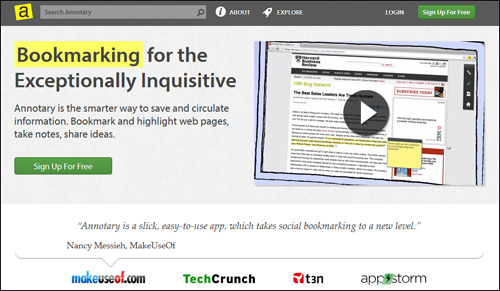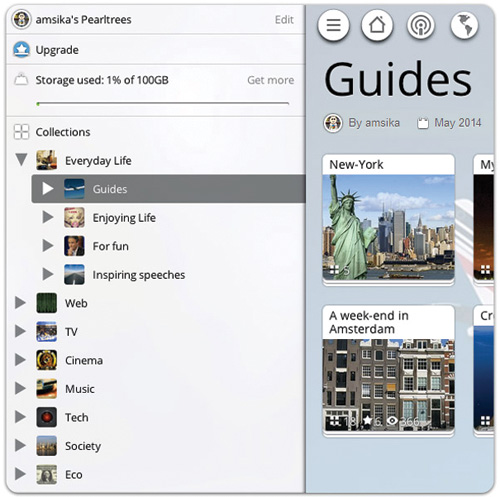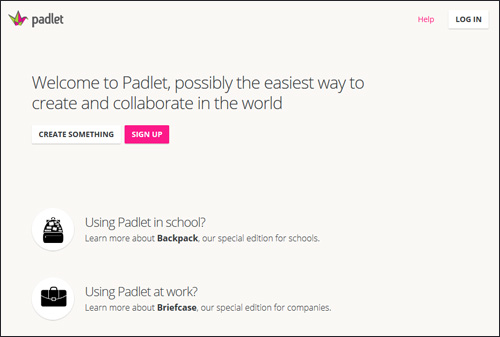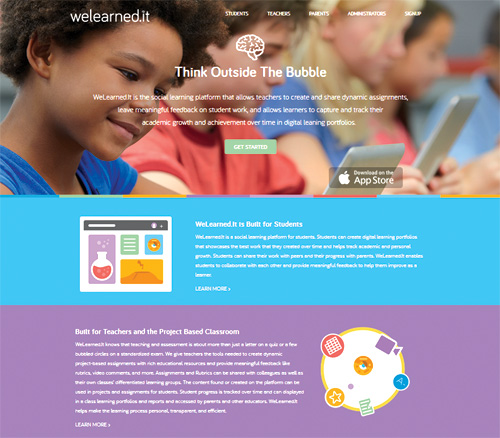Five Top Collaborative Research Tools | Cool Tools
The Internet is built for sharing knowledge, but students often research and write in isolation—and turn out papers that cite the same handful of resources over and over. Collaborative research prompts students to share their discoveries, exposing them to more material than if they go it alone. It can also teach them to work together, defend choices, and think critically about the content they find on the Internet. These tools can jumpstart the process.
 I first started having students collaborate in this way when I introduced them to Diigo back in 2008. This tool allows you to create public and private groups for sharing links and notes about the linked items. I set up groups for my students and had them pool material related to topics we were discussing in my social studies classroom. My rule: no more than two students could add the same link, and they had to include a note justifying each one’s inclusion. Diigo has evolved over the years—you can now use its browser extensions to highlight portions of web pages and clip specific web page sections. It also offers iOS and Android apps for bookmarking websites on your phone or tablet.
I first started having students collaborate in this way when I introduced them to Diigo back in 2008. This tool allows you to create public and private groups for sharing links and notes about the linked items. I set up groups for my students and had them pool material related to topics we were discussing in my social studies classroom. My rule: no more than two students could add the same link, and they had to include a note justifying each one’s inclusion. Diigo has evolved over the years—you can now use its browser extensions to highlight portions of web pages and clip specific web page sections. It also offers iOS and Android apps for bookmarking websites on your phone or tablet.
 Annotary is a social bookmarking service similar to Diigo. You can use it to mark sites, highlight portions of pages, and annotate pages with sticky notes. Like any good online bookmarking service, Annotary lets you share bookmarks and search for public lists. Creating private collections that are accessible by invitation is also an option—and a good setup for classroom use, enabling students to share material with each other, but not the whole world. One downside to Annotary: currently, there’s no mobile app.
Annotary is a social bookmarking service similar to Diigo. You can use it to mark sites, highlight portions of pages, and annotate pages with sticky notes. Like any good online bookmarking service, Annotary lets you share bookmarks and search for public lists. Creating private collections that are accessible by invitation is also an option—and a good setup for classroom use, enabling students to share material with each other, but not the whole world. One downside to Annotary: currently, there’s no mobile app.
 If your students want to file share, as well as pool online resources, Pearltrees is a good choice. It enables you to build collections of links, documents, videos, pictures, and other files, and the browser extension lets you add web page content. Uploading files from your computer to a Pearltrees group is a simple matter of dragging it from your desktop and dropping it into your browser when the Pearltrees site is open. Sharing resources is easy, too: In addition to Tweeting, Facebooking, and emailing collections, you can embed them into a web page. The only drawback is that your collections are all public unless you pay for a premium account ($35/year).
If your students want to file share, as well as pool online resources, Pearltrees is a good choice. It enables you to build collections of links, documents, videos, pictures, and other files, and the browser extension lets you add web page content. Uploading files from your computer to a Pearltrees group is a simple matter of dragging it from your desktop and dropping it into your browser when the Pearltrees site is open. Sharing resources is easy, too: In addition to Tweeting, Facebooking, and emailing collections, you can embed them into a web page. The only drawback is that your collections are all public unless you pay for a premium account ($35/year).
 Teachers who want the best of Pearltrees and the kind of privacy options offered by Diigo should check out Padlet. This free service allows you to make online pages of shared notes, videos, and documents, and invite others to add content. You can password-protect your pages, hide page URLs, or leave them completely public. Teachers who set up Padlet pages can moderate all contributions—and catch things that shouldn’t appear there—before they go up. A browser extension, Padlet Mini, lets you send links directly to a Padlet page.
Teachers who want the best of Pearltrees and the kind of privacy options offered by Diigo should check out Padlet. This free service allows you to make online pages of shared notes, videos, and documents, and invite others to add content. You can password-protect your pages, hide page URLs, or leave them completely public. Teachers who set up Padlet pages can moderate all contributions—and catch things that shouldn’t appear there—before they go up. A browser extension, Padlet Mini, lets you send links directly to a Padlet page.
 In classrooms where every student has access to an iPad, the WeLearnedIt app can be a good tool for collaborative research. You and your students can assemble portfolios of files from Google Drive, Dropbox, links from the web, images and videos captured with your iPad, and whiteboard videos created within the WeLearnedIt app.
In classrooms where every student has access to an iPad, the WeLearnedIt app can be a good tool for collaborative research. You and your students can assemble portfolios of files from Google Drive, Dropbox, links from the web, images and videos captured with your iPad, and whiteboard videos created within the WeLearnedIt app.
Using these tools, students will turn up more materials—and perhaps think more deeply, too. When it comes to research, many heads can be better than one.
RELATED
The job outlook in 2030: Librarians will be in demand
The job outlook in 2030: Librarians will be in demand
ALREADY A SUBSCRIBER? LOG IN
We are currently offering this content for free. Sign up now to activate your personal profile, where you can save articles for future viewing






Add Comment :-
Be the first reader to comment.
Comment Policy:
Comment should not be empty !!!